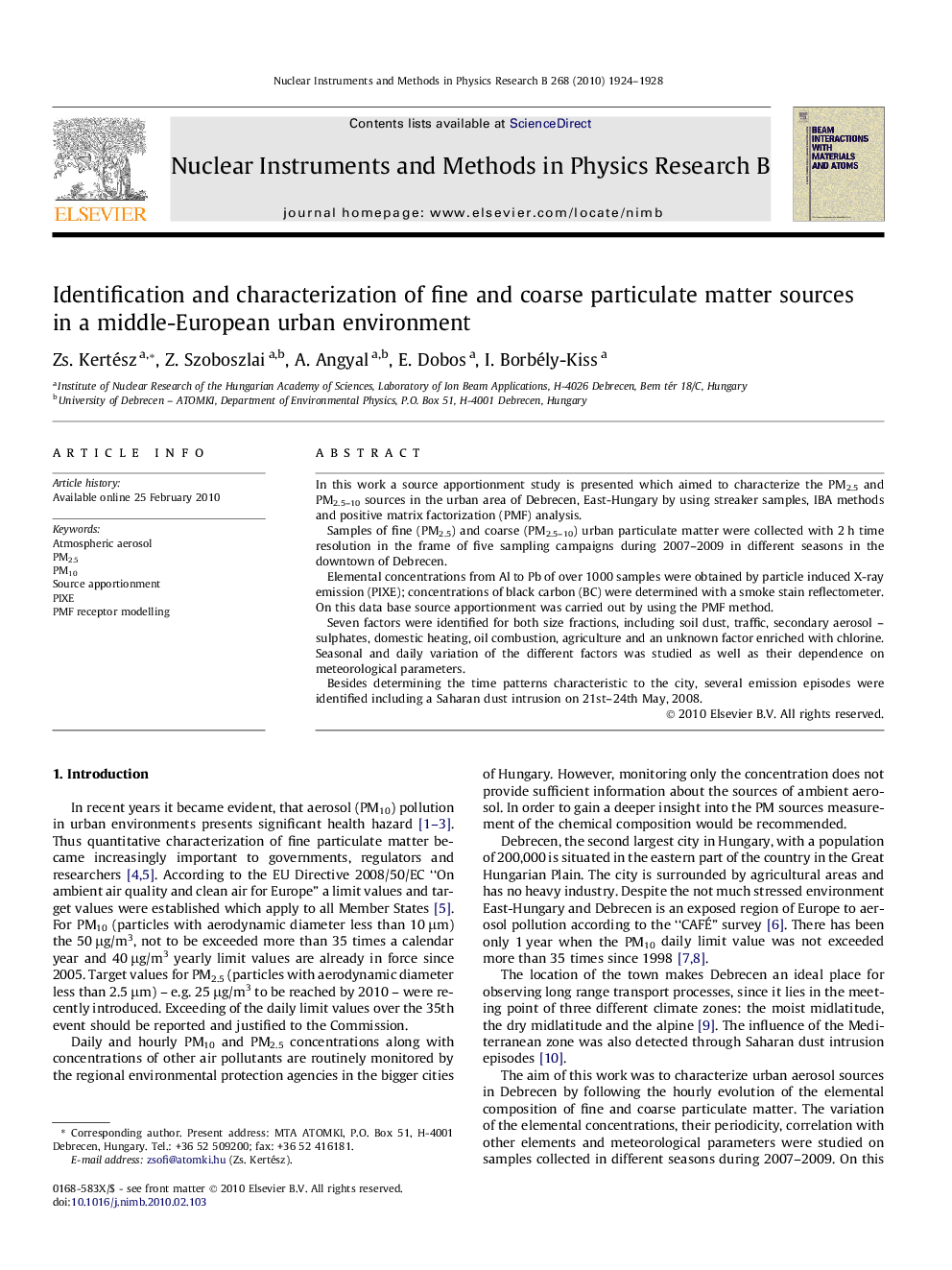| کد مقاله | کد نشریه | سال انتشار | مقاله انگلیسی | نسخه تمام متن |
|---|---|---|---|---|
| 1684248 | 1518749 | 2010 | 5 صفحه PDF | دانلود رایگان |

In this work a source apportionment study is presented which aimed to characterize the PM2.5 and PM2.5–10 sources in the urban area of Debrecen, East-Hungary by using streaker samples, IBA methods and positive matrix factorization (PMF) analysis.Samples of fine (PM2.5) and coarse (PM2.5–10) urban particulate matter were collected with 2 h time resolution in the frame of five sampling campaigns during 2007–2009 in different seasons in the downtown of Debrecen.Elemental concentrations from Al to Pb of over 1000 samples were obtained by particle induced X-ray emission (PIXE); concentrations of black carbon (BC) were determined with a smoke stain reflectometer. On this data base source apportionment was carried out by using the PMF method.Seven factors were identified for both size fractions, including soil dust, traffic, secondary aerosol – sulphates, domestic heating, oil combustion, agriculture and an unknown factor enriched with chlorine. Seasonal and daily variation of the different factors was studied as well as their dependence on meteorological parameters.Besides determining the time patterns characteristic to the city, several emission episodes were identified including a Saharan dust intrusion on 21st–24th May, 2008.
Journal: Nuclear Instruments and Methods in Physics Research Section B: Beam Interactions with Materials and Atoms - Volume 268, Issues 11–12, June 2010, Pages 1924–1928